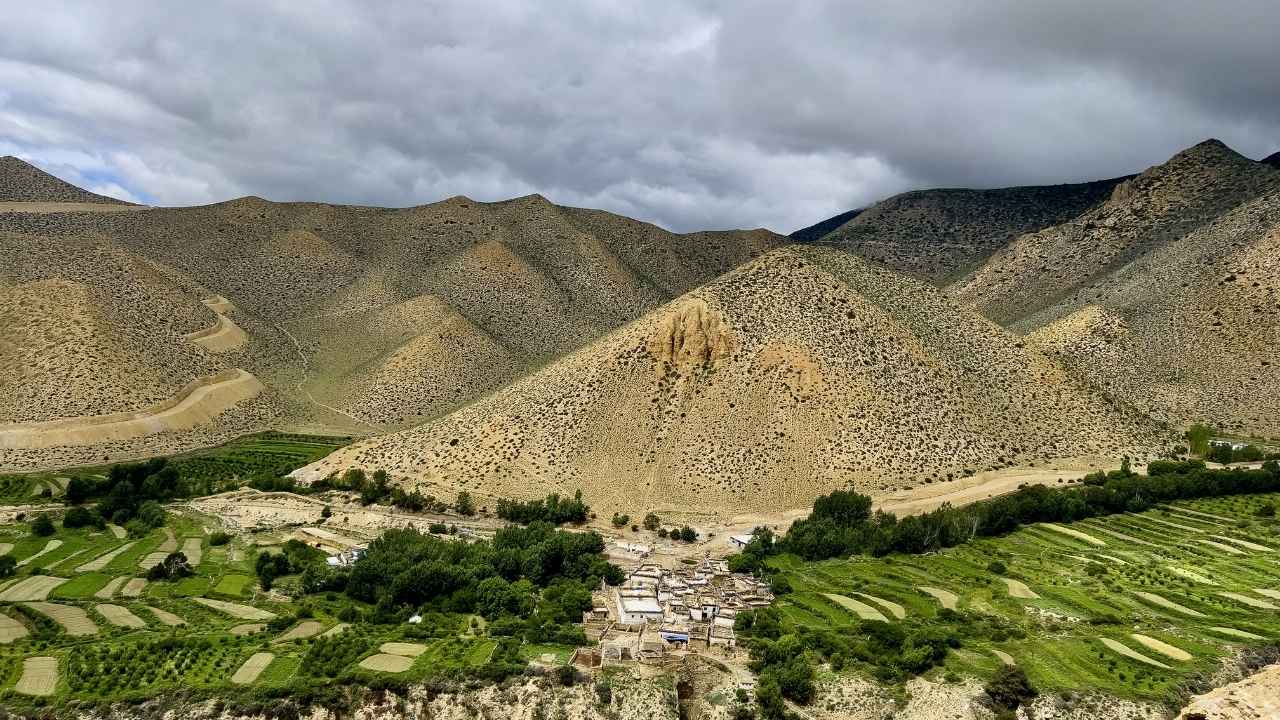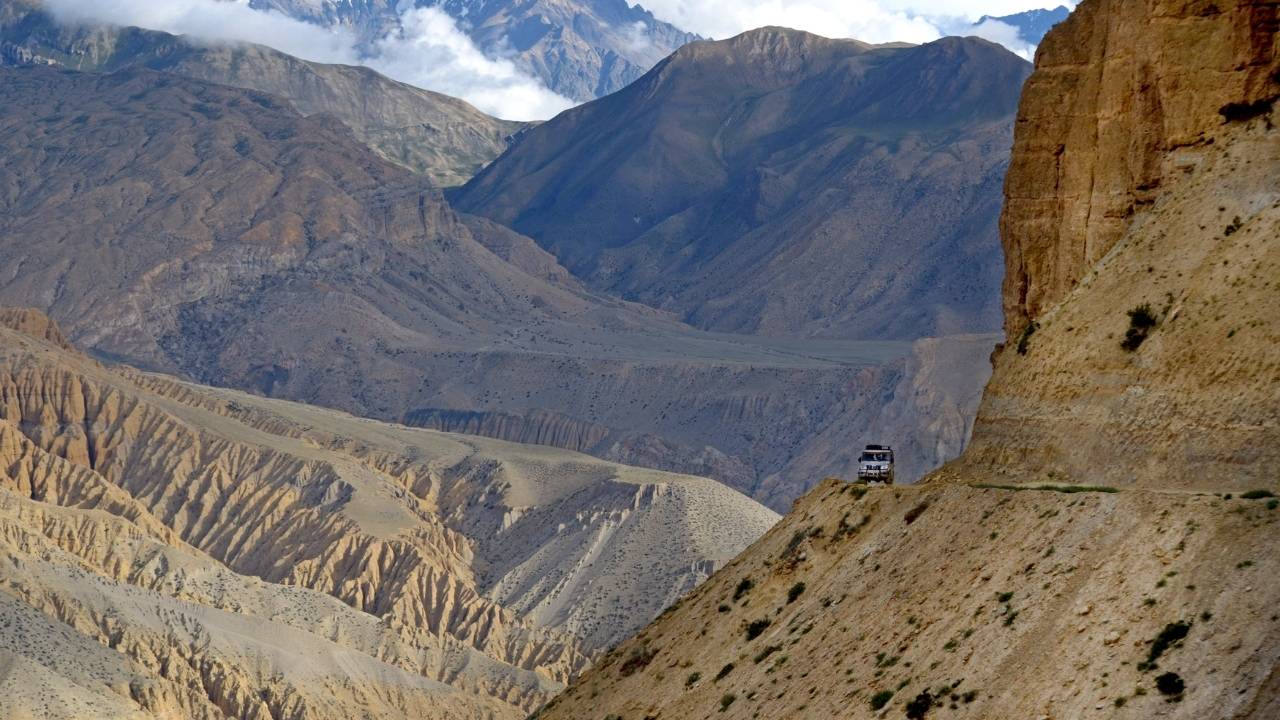The Nepal Government has officially decided to remove the long-standing flat US$ 500 fee for the first 10 days in the Upper Mustang. Instead, now, the government will introduce a daily permit rate of US$ 50 per person in a move aimed at making the region more accessible and boosting tourism.
The Upper Mustang Restricted Permit has always been more than just paperwork. It is the key that opens up one of the most protected cultural landscapes in Nepal. As this region sits close to the Tibetan border and carries centuries of preserved Himalayan heritage, the rules around entry to the region rarely change. That's why the latest revision regarding the permits feels significant.
Nepal Government has decided to scrap the long-standing US$ 500 flat fee for the first 10 days. After the first 10 days, the trekkers and travelers had to pay US$ 50 per day for each additional day. However, now, the government has replaced the initial flat fee with a US$ 50 per day system. The Minister for Communication and Information Technology, Jagadish Kharel, the government spokesperson, told the media about the decision of the cabinet meeting that was held on Tuesday, 18th November 2025.
The trekking agencies that are happy about the cabinet decision say that this is just a start. They are positive that the government will also work on easing the restrictions in other areas in terms of both entry and fees. The Trekking Agencies Association of Nepal (TAAN) also welcomes the decision, saying that it had been requesting the government for flexibility on restrictions.
Upper Mustang: A Protected Cultural Landscape With Geopolitical Sensitivity
The Upper Mustang region is not just another trekking region; it is one of Nepal’s culturally and historically delicate landscapes. Geographically, this last ‘Forbidden Kingdom’ of the Himalayas is situated between the Annapurna and Dhaulagiri mountain ranges. This region sits in the trans-Himalayan rain shadow zone. The eroded cliffs, ochre canyons and the windswept plateaus here create a surreal desert environment that is quite similar to the Tibetan landscape.
For centuries, Upper Mustang operated as an independent Kingdom of Lo under the rule of a monarchy. Even today, many of its villages preserve intact Tibetan Buddhist traditions, monasteries that date back over 600 years and live simple Himalayan life that has been minimally influenced by the outside world. If you didn’t know, Upper Mustang was only open for foreign travelers in 1992. That adds some context on how well this Forbidden Kingdom has preserved its roots and traditions that have been passed down through centuries.

Because of this exceptional cultural heritage and its proximity to the Tibetan border, Nepal categorizes Upper Mustang as a restricted area. This restricted area status is designed to control the flow of foreign visitors, ensure the regulation of tourism and prevent cultural disturbance or unauthorized cross-border activities. Therefore, trekkers are required to enter the region with a Restricted Area Permit (RAP) that is issued by the Department of Immigration.
They are also required to trek through a government-licensed agency and must be accompanied by a certified guide. Solo trekking is not allowed in the restricted areas and a minimum of two foreigners have traditionally been required for the permit process. This carefully managed entry system ensures that the tourism activity does not overwhelm the cultural and ecological systems, which make the Upper Mustang unique.
Understanding the Old Permit System and Why It Needed Reform
Prior to this revision, the Upper Mustang Trek Permit fee was fixed at US$ 500 per person for the first 10 days. Regardless of how long trekkers planned to stay, they had to pay for the entire duration flat rate. After those 10 days, every additional day was charged US$ 50 per person. This structure was originally created when Upper Mustang was opened to foreigners in the early 1990s.
During that time, the trekking routes were long, the infrastructure was minimal and there was no proper roadway. Thus, reaching the Lo Manthang almost always required a full 10-days journey. But in the last decade, the conditions have changed significantly.
-
Road development deep into the Mustang region has shortened the access time
-
Many travelers only spend few days inside the restricted zones, something only 5 to 7 days
-
Shorter itineraries have become more common, especially for travelers combining Mustang with other Nepal tours
-
The flat US$ 500 permit cost made the Upper Mustang Trek disproportionately expensive compared to similar high-value trekking regions
The old rules and regulations did not reflect the new travel patterns. Thus, a large portion of trekkers ended up overpaying relative to the actual time spent inside the restricted region. To draw attention to these travel pattern changes and to bring ease to explorers traversing this restricted region, the Trekking Agencies Association of Nepal (TAAN) has been constantly raising its voice.
TAAN Raises Its Voice for Trekkers: A Call for Transparent, Sensible Permit Policies
To advocate the changed travel patterns and how the trekkers are paying more than their actual stay in the restricted region, the Trekking Agencies Association of Nepal (TAAN) stepped in strongly. They made demands like replacing the outdated flat-fee model with a duration-based system. The minimum 10-day requirement penalized the shorter itineraries, so it was a crucial step. TAAN also made a point about ensuring the pricing factor remains competitive with similar restricted regions globally.
With these steps, the TAAN believes that the change in policy will boost tourism in the Upper Mustang without compromising cultural preservation. The trekkers' association argues that a flexible, per-day model would attract more trekkers and distribute the visitors evenly throughout the region. This fair module is hoped to make Mustang accessible even for those who are seeking shorter itineraries with more curated experiences. Nepal Government’s recent revision is a response to these long-standing concerns that had been raised by the Trekking Agencies Association of Nepal (TAAN).

Besides the Upper Mustang region, the trekking association has also made a request to the Nepal Government to revise the permit fee for the Upper Dolpo region. This is another popular trekking region in Nepal that requires a Restricted Area Permit (RAP). The Upper Dolpo region is one of the most spiritually charged and isolated regions that treasures an unspoiled culture and natural beauty. The trekking trail on this route stretches across the Shey-Phoksundo National Park in the Dolpa district, which houses the deepest lake in Nepal, Shey-Phoksundo Lake (approx.145 meters).
Like Upper Mustang, the RAP fee for Upper Dolpo is US$ 500 per person for the first 10 days. And after 10 days, the individuals are charged US$ 50 per day. Although the Upper Dolpo Trek is longer, many trekkers don’t spend the full 10 days inside the actual restricted boundary. The permit cost alone becomes prohibitively high, limiting Upper Dolpo to a small and wealthy segment of trekkers. The high upfront fees are also believed to discourage the exploration of the culturally sensitive regions, which could actually benefit from managed tourism and income opportunities.
According to the Trekking Agencies Association of Nepal (TAAN), adopting the per-day calculation similar to the new Upper Mustang rule would make the Upper Dolpo more accessible while maintaining the regulations. With this, the local communities would benefit more consistently from trekking tourism.
The Push to Remove the ‘Two Foreign Trekkers Minimum’ Rule
Another major issue that TAAN is raising is the long-standing requirement in the restricted areas which can only be entered by a minimum group of two foreign nationals. This policy was justified based on the argument that:
-
Restricted areas are remote and require regulated oversight
-
The possibilities of the solar trekker facing safety and security challenges
-
Group travel being easy to monitor for the authorities
But, in today’s trekking environment, this rule has become a frustrating limitation for both travelers and the agencies. Many modern trekkers, especially younger explorers and experienced hikers, prefer to travel solo but with a guide. They are willing to comply with all regulations. But finding a second foreigner to ‘pair up’ with is not always possible. Due to this, the accessibility of such trekkers is limited in restricted regions like Upper Mustang, Upper Dolpo and Kanchenjunga.
Likewise, the agencies have to scramble to match the solo trekkers with strangers just to satisfy the rule, which eventually delays permit issuance, further complicating the logistics. With mandatory licensed guides, GPS tracking, digital permits and growing connectivity, even solo trekking is safer and easier to regulate. Solo travelers often spend more per person on guides, porters, accommodation and locals. So, blocking them would mean blocking a high-value tourism.

